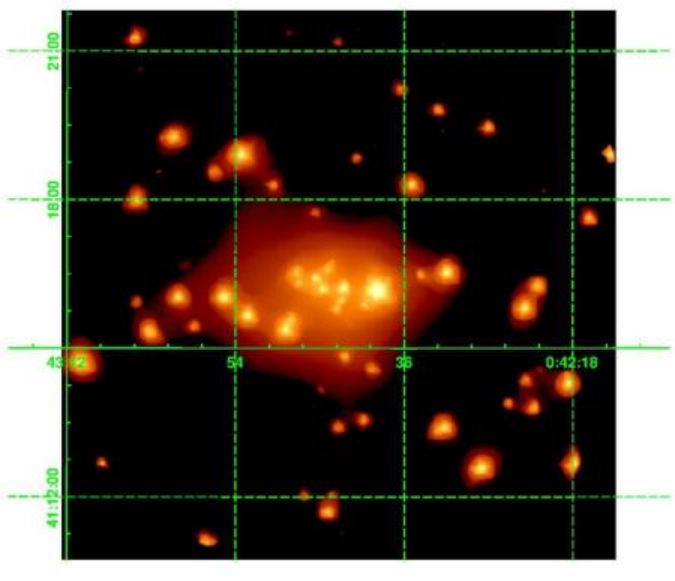
 Credit: ESA/UCSB/R. Shirley
Credit: ESA/UCSB/R. Shirley
X-ray Census in Andromeda
The Andromeda Galaxy (also known as M31) is a close neighbor to the Milky
Way (only 2.6 million light years away!). The Andromeda is a favorite object
of astronomers, and X-ray astronomers in particular, since it's easier to
determine the position and spatial distributions of stars and gas in the
galaxy. Because Andromeda is distant, good spatial resolution and
sensitivity is needed to detect sources in Andromeda clearly. The XMM-Newton X-ray observatory has
recently observed the Andromeda, and taken a "census" of the bright sources
of X-ray emission. The image above of the center of the Andromeda galaxy
was obtained in a 10 hour exposure with XMM-Newton's EPIC camera.
The bright points of X-ray light are probably X-ray binaries powered by the
accretion of star matter onto a neutron star (or black hole). The EPIC
image also shows faint diffuse emission near the center of the galaxy which
apparently is not related to point sources like stars or binaries, and
probably which represents diffuse hot gas produced over millions of years
by exploding stars called supernovae. Astronomers hope that by studying the
diffuse X-ray gas they can reconstruct the number of stars which must have
exploded in Andromeda
Last Week *
HEA Dictionary * Archive
* Search HEAPOW
* Education
Each week the HEASARC
brings you new, exciting and beautiful images from X-ray and Gamma ray
astronomy. Check back each week and be sure to check out the HEAPOW archive!
Page Author: Dr. Michael F.
Corcoran
Last modified January 26, 2001


